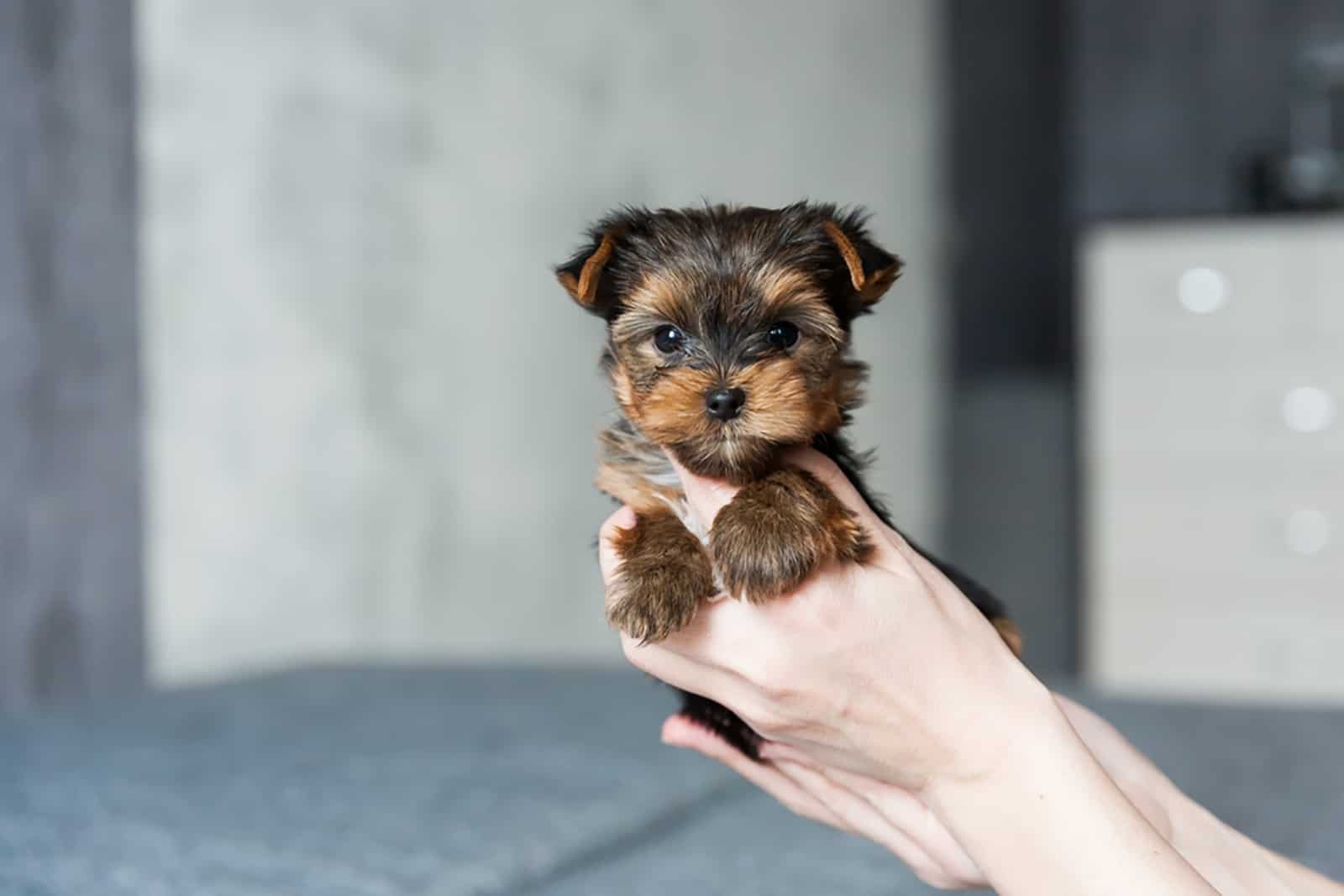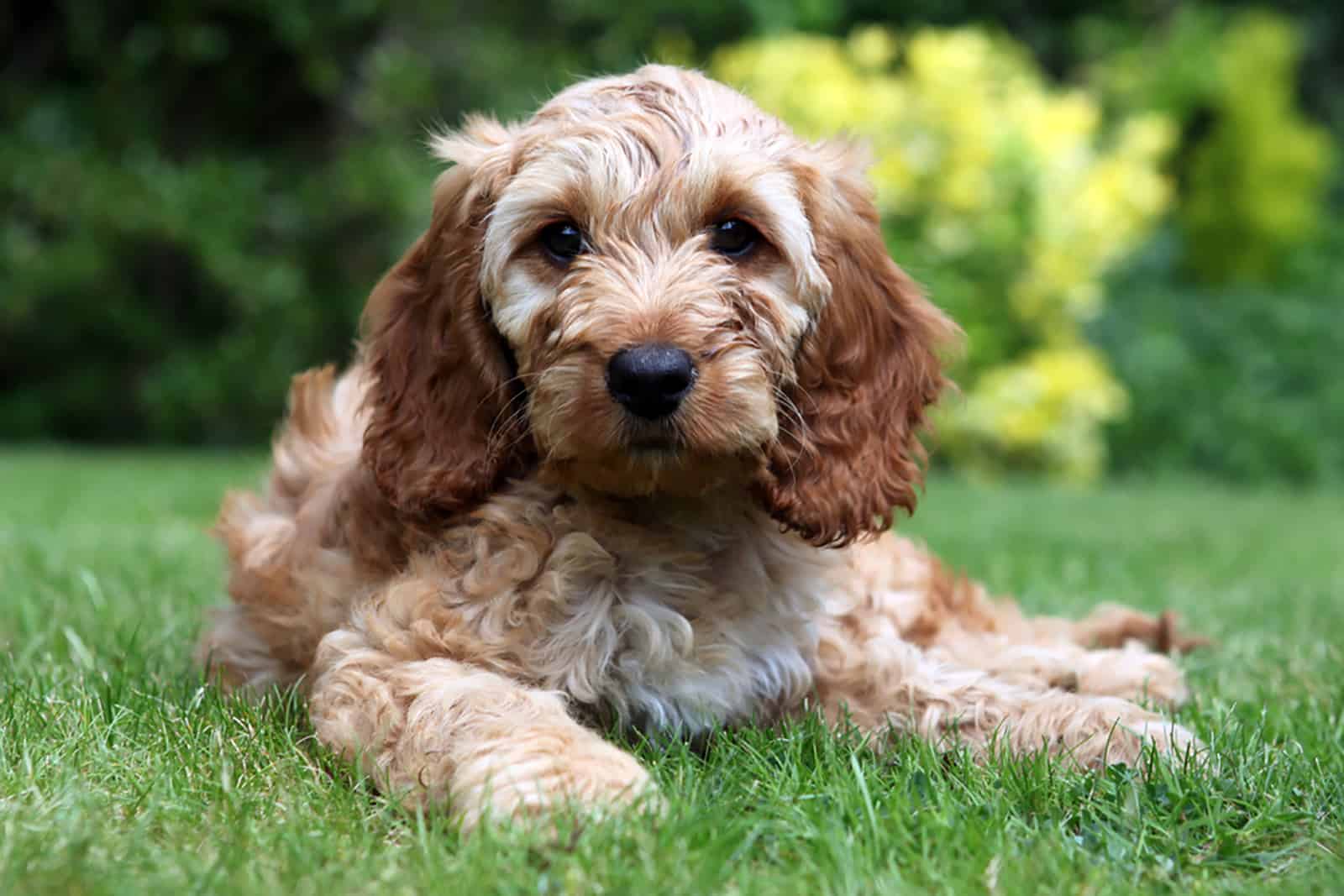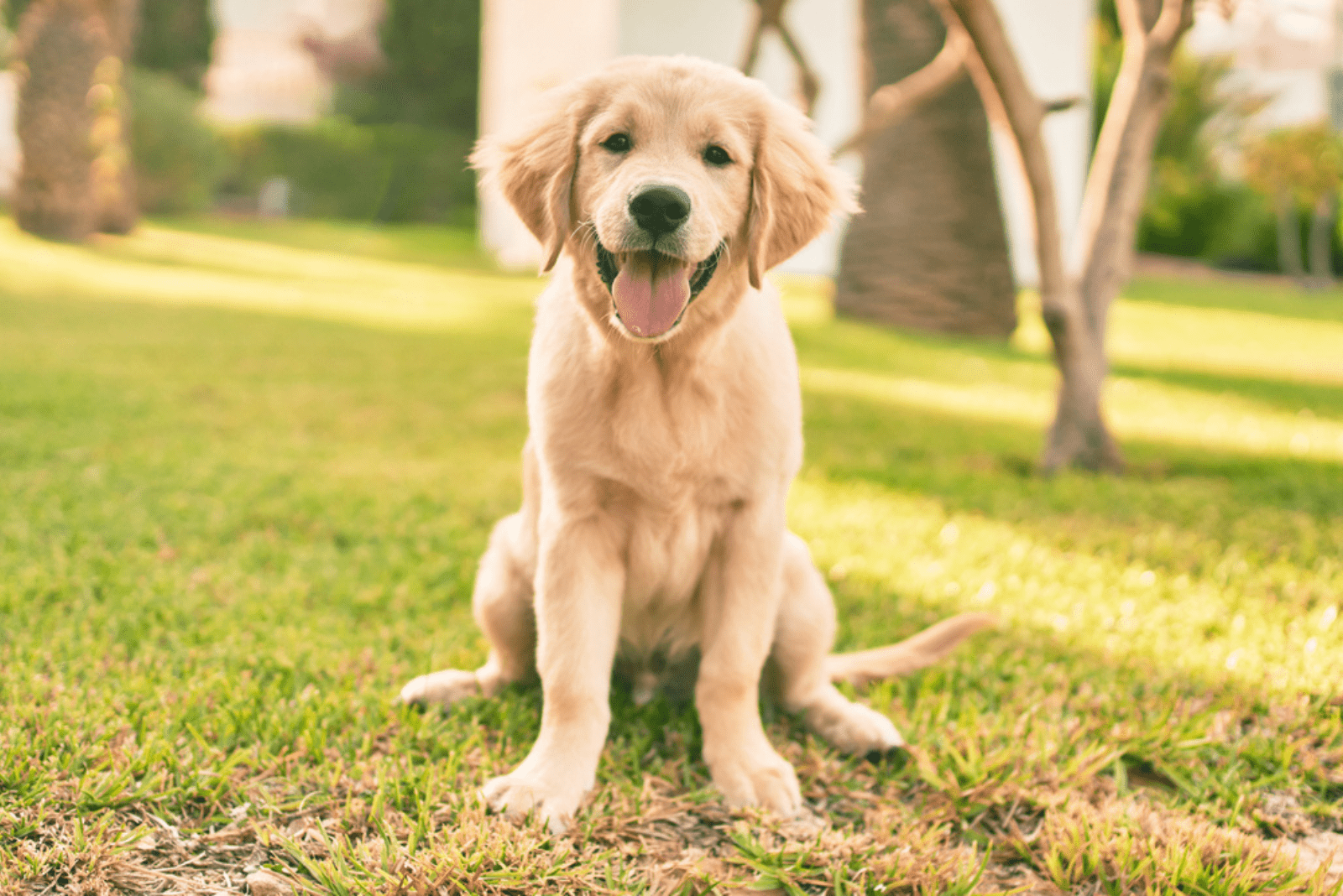The ‘‘Akita Inu Vs Shiba Inu’’ debate is a popular one in dog enthusiasts’ circles. In fact, many people can’t tell them apart, especially due to their similar conformation.
Even though these two Japanese Spitz dogs share a plethora of traits, the truth is that they are two different breeds. On one hand, we have Akitas, which represent the national treasure of Japan as they are the symbol of happiness and longevity.
On the other hand, Shiba Inu puppies have been known to mostly hunt small game (and wild boars in packs) for a very long time.
In order to make a clear distinction between these two, we will present you both of these purebred puppies in detail. Let’s roll!
Akita Inu Vs Shiba Inu Comparison
Generally, Akita puppies and Akita mixes are much larger dogs in comparison to their Shiba Inu counterparts. They may look alike in pictures, but even inexperienced dog enthusiasts can tell the difference if they see them in the flesh.
Akita puppies are known to be the largest in the Spitz family, which makes them look like Huskies more than Shibas.
| Akita Inu | Shiba Inu | |
|---|---|---|
| Weight: | 100-130 pounds | 23 pounds |
| Height: | 26-28 inches | 14.5-16.5 inches |
| Cost: | $700-$2000 | $1500-$2500 |
| Lifespan: | 10-14 years | 13-16 years |
| Coat Type: | double, medium-long | double, short |
| Coat Color: | black, brown brindle, fawn, red, white, brown with black overlay | black and tan, cream, red sesame |
| Shedding Amount: | moderate | moderate |
| Hypoallergenic: | no | no |
| Social skills: | loyal, affectionate, aloof with strangers | playful, reserved towards strangers |
| Housing: | requires plenty of space, bad for apartments | adapts well in small apartments |
| Trainability: | firm leadership required, easy to train | stubborn, hard to train, firm leadership required |
| Exercise Needs: | two hours a day minimum | an hour a day minimum |
| Aggressiveness: | aggressive towards strangers, pets, and children | aggressive towards strangers and small pets |
| Around Kids: | not the best breed for kids | slightly better with kids |
| Around Other Pets: | dominant, aggressive towards other dogs | dominant, bossy, slightly better with other animals |
Furthermore, these two canines are completely different dogs when it comes to temperament. While Shiba puppies are known to be easier with children and other animals, Akita dogs are pretty territorial and aggressive towards other pets.
Still, the latter happens to be easier to train once you stand your ground as the leader, which is not the case with Shiba dogs. The Shiba Inu breed is known to be stubborn and mischievous at times.
History
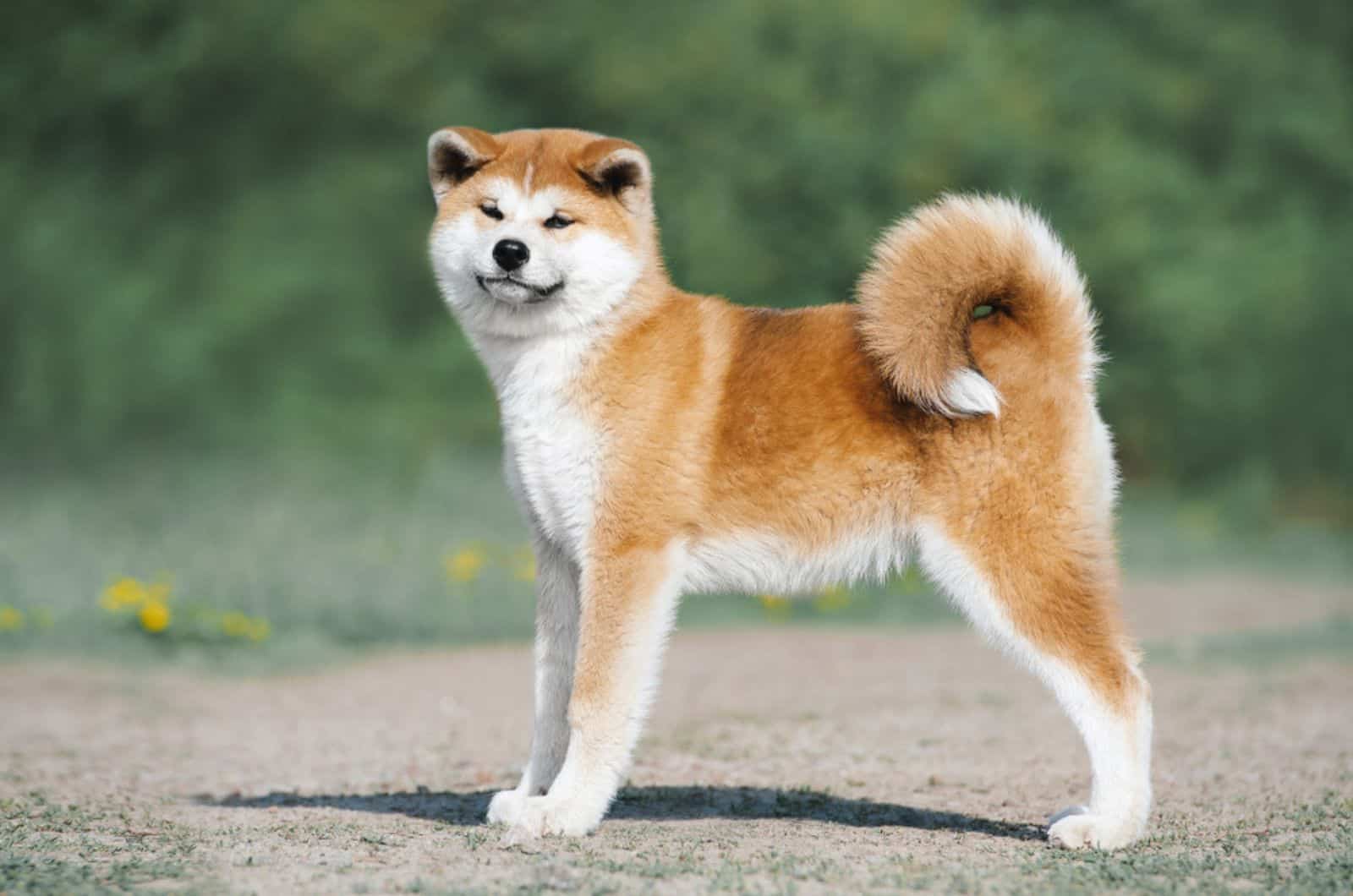
Both of these puppies have their origins in Japan. However, Shiba puppies happen to be much more popular than their counterparts, even though the Akita puppy is declared a national treasure.
Nowadays, both of these dogs are widely represented both in Japan and in other parts of the world. However, Akita breeders emphasize the importance of commitment, dedication, and firm leadership when it comes to these pooches as Akitas can be extremely sensitive and stubborn.
On the other hand, Shiba puppies are much more represented in respect to their big Spitz cousins as they have proven to be a smarter choice in households due to their smaller size.
Akita Inu
I bet you all have watched the ‘‘Hachiko: A Dog’s Tale’’ movie by now. That’s right! Japanese Akita dogs are one of a kind! These large pooches are known for their independent, dignified, and courageous character, which makes them true guard dogs of families.
The breed is more than 2,000 years old, which makes this puppy one of the oldest in the world. While Japanese Akitas are much rarer (as they only come in brindle, black, and red coloration), their American counterparts come in a variety of colors.
These pooches were initially used as hunting dogs due to their big size. Hunting wild boars and elks was common in Japan in the 15th and 16th century. Years later, the breed was popular as a companion of Japanese Samurai, too.
In the early 20th century, the breed was declared a national treasure of Japan as there was a belief that these pooches bring happiness and longevity.
In 1972, these magnificent puppies first stepped onto American soil, which is when they were officially recognized by the American Kennel Club. Ever since then, this breed has been popular as a human companion.
Nowadays, these large dogs can be found in U.S. households as watchdogs and family dogs. Due to their big size, people qualify them among the dogs that look like Huskies rather than their Shiba counterparts.
With their thick, double coat, and their triangular ears, these puppies have a unique look that makes them one of the most fashionable breeds in the world.
Shiba Inu
Interestingly, Shiba puppies are a more than 8,000-year-old breed that has been preserved, protected, and selectively bred. Shiba is the old Japanese word for ‘‘small’’, which, together with the word ‘‘Inu’’ (dog) – means ‘‘a small dog,’’ or ‘‘a brushwood dog.’’
Alongside Akitas, these canines were also declared a national treasure in 1936. The initial purpose of Shiba puppies was hunting small game, deer, and wild boars (only in packs).
To this day, these gorgeous dogs preserve their high prey drive, which is why Shiba Inu breeders don’t recommend this puppy to families with children or small pets.
Still, early-socialized and obedience-trained Shiba dogs can be excellent companions as they are playful, active, and full of joy. However, the breed can be high-maintenance for first-time dog owners as they occasionally display stubbornness and aggression.
Nowadays, you can find this Japanese dog breed all over the world as Shiba puppies became very popular after 1992, which is the the year of their official recognition by the AKC.
Akita Inu Vs Shiba Inu: Physical Appearance
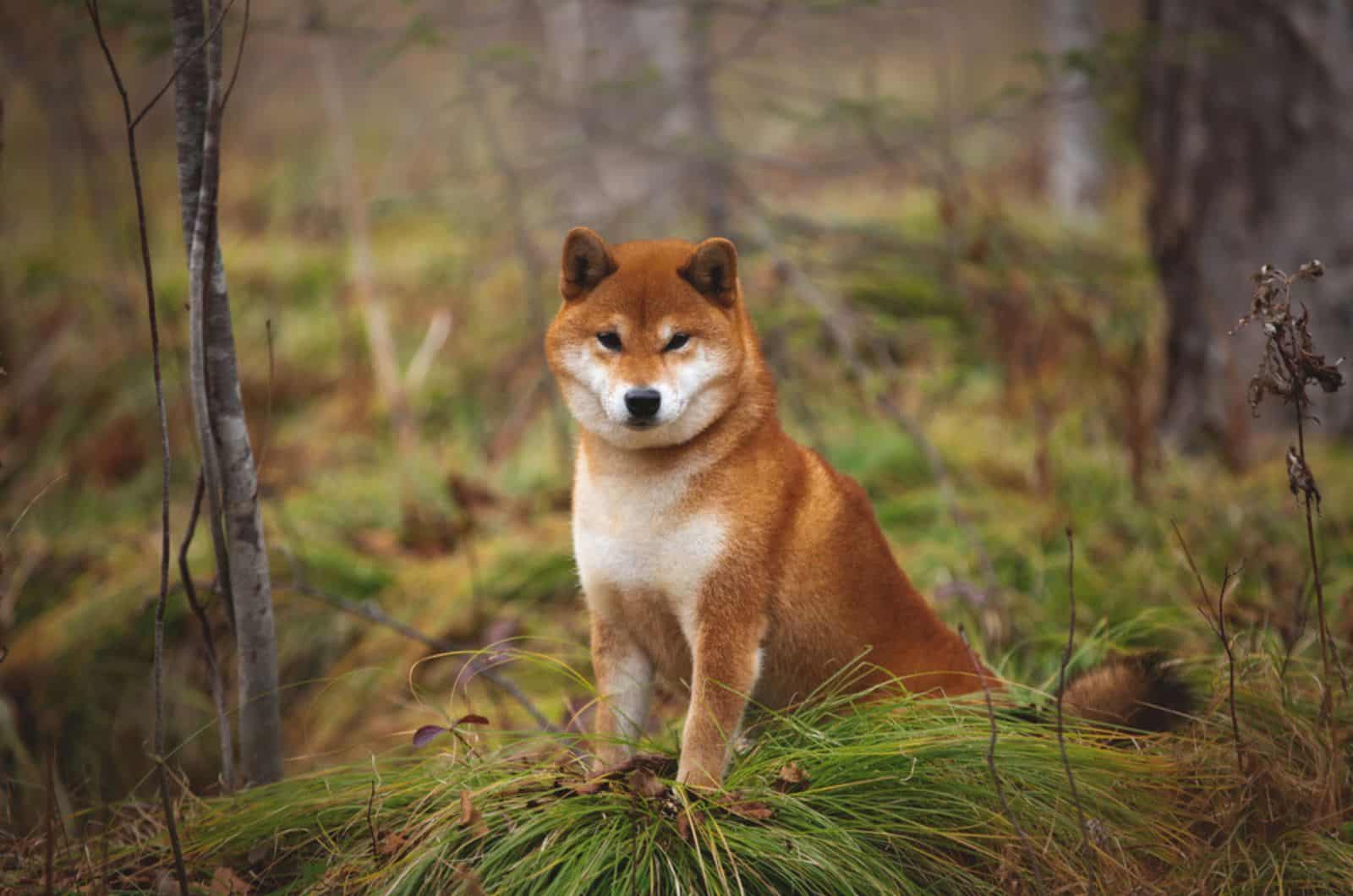
In order to distinguish Shiba puppies from their Akita counterparts, we first need to make a difference between Japanese and American Akitas. Unlike their Japanese ancestors, the American Akita breed appears bigger, with the popular bear-like head.
On the other hand, Japanese puppies are slightly smaller, with a fox-shaped head.
The Japanese dog is generally better with family members, and they get along with children respectfully. On the other hand, American puppies are much more aloof with strangers and kids, which is why the breed is not recommended for families with small children.
When it comes to the Akita vs Shiba Inu comparison, we have more than a few differences to tell. Namely, it is not that hard to tell the difference between these two breeds, even to the untrained eye.
They may appear similar in conformation, but the truth is these two puppies are totally different in their physical appearance.
Akita Inu
Are you looking for a big, fluffy dog breed? Well, you found one! These bear-headed, big canines are everything you need in a dog companion. With their strong, broad muzzle, and triangular, pointy ears, these puppies appear adorable in their looks.
These doggies have physical traits all their own, and they are not that hard to tell apart from Shiba puppies.
In respect to their Shiba counterparts, these pooches are much bigger as they reach up to 130 pounds in weight. Their strong, muscular body makes them capable of fighting off big animals, such as wolves or even bears.
Aside from the obvious size difference, Akita dogs have a longer coat, which is medium-long. They are moderate shedders. The Akita will need at least one brushing a week, while they need to be bathed every three to four months or so.
These are extremely clean and neat puppies that live indoors, even though they require plenty of space for movement. They are generally more recommended to families who live in the country as these large pooches have higher exercise needs than their Shiba counterparts.
Shiba Inu
Unlike their fellow citizens, Shiba puppies have a foxy face, with a narrowed muzzle and small, triangular ears. Their small, dark eyes make them appear heart-melting and fashionable, while their curled tail makes them retain their body heat.
Generally, Shiba dogs and Shiba mixes are significantly smaller than their Akita counterparts, which is why the breed is more recommended for people living in smaller apartments. They have a higher adaptability potential as they don’t require as much space as Akitas.
They also have a double coat that protects them from severe conditions, but their outer coat is stiffer than it is in Akita puppies. On the other hand, their undercoat is generally softer. These pooches shed moderately, and they need weekly brushing to remain neat and shiny.
Despite the fact that this is a small to medium-sized dog, they need regular, daily exercise in order to remain calm and happy. Shiba puppies that miss out on their regular training may come across as aggressive and self-destructive.
Akita Inu Vs Shiba Inu: Size
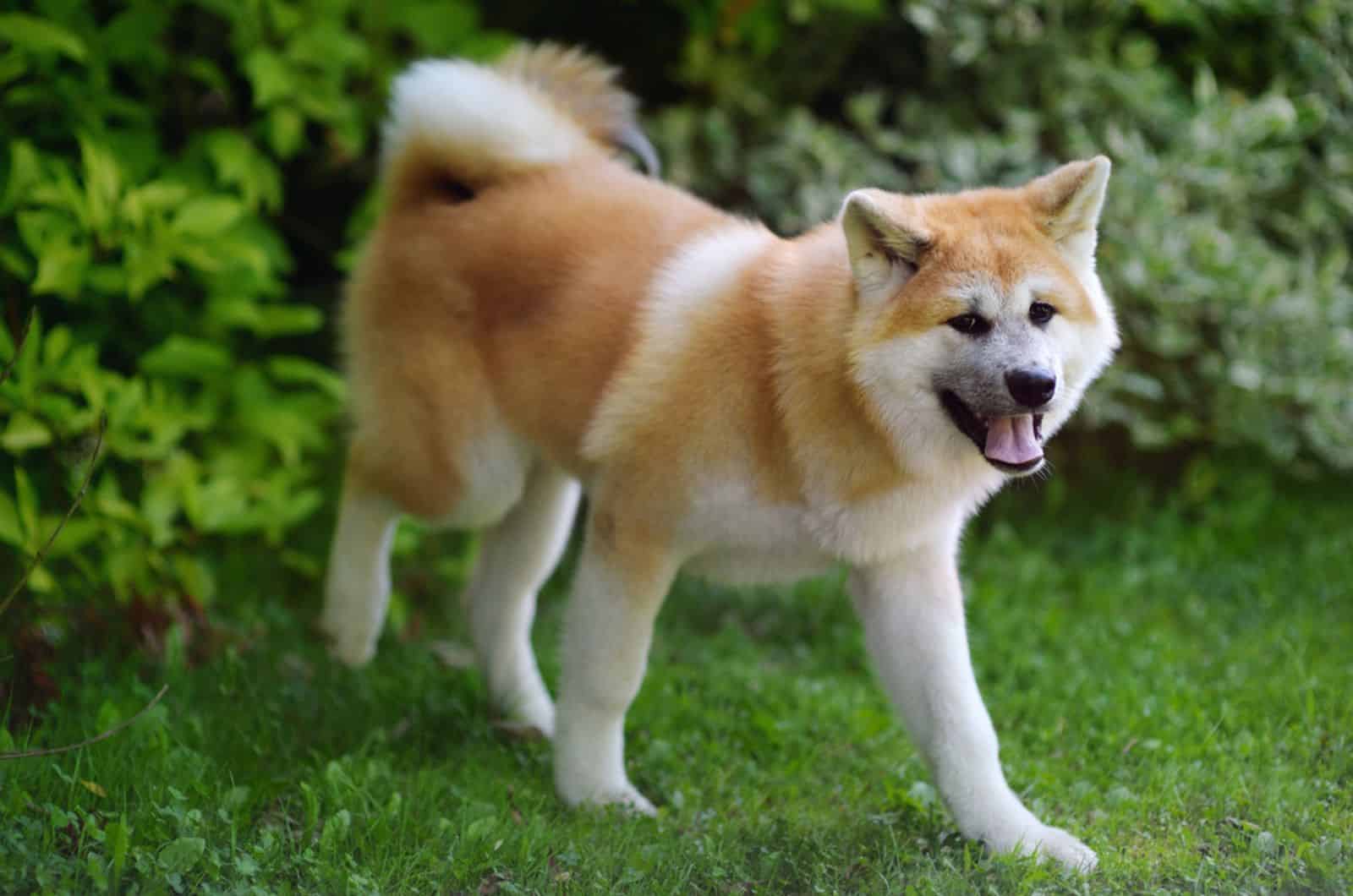
Although there is an evident difference in size between these two breeds, both Shibas and Akitas need a higher amount of exercise during the day in comparison to other family breeds. Exercise helps them preserve their neat body shape.
On the other hand, laziness in these dogs is a trigger for obesity as well as for diabetes.
Even though Akitas are much more prone to diabetes, their Shiba counterparts can face the same problem, too. That’s why both of these dogs, aside from regular exercise, require a well-organized feeding chart and high-quality food.
If you have one of these pooches in your home, you should stay away from poor dog food brands and junk food.
Akita Inu
According to the Akita growth chart, these canines are between 100 and 130 pounds in weight. On the other hand, the average height of this puppy revolves between 26 and 28 inches, which makes this dog a large breed.
Generally, the size of your Akita will depend on several factors: genetics, health issues, and dieting. Hypothyroidism is one of the main reasons why some Akita puppies don’t reach their average size.
As this is a big dog, you should be more careful about their meal plan as Akitas tend to develop bloat. In order to avoid voracious eating, try splitting their meals into several smaller ones.
Furthermore, always take into consideration that excessive feeding doesn’t do good to your puppy. Obese Akitas are unhappy, lazy, and self-destructive, and they have a tendency of developing further health problems, such as diabetes and heart disease.
Due to their size, you can expect to spend significantly more on your Akita’s food as these canines eat approximately five to six cups of quality food during the day.
Shiba Inu
These purebred canines generally weigh around 23 pounds, while their average height revolves between 14.5 and 16.5 inches. Given their proportions, they qualify among small to medium breeds. Due to their adequate size, Shibas are favored by families living in small, city apartments and studios.
They approximately eat one to two cups of quality food a day, which makes them easy-maintenance. Still, the puppy has a tendency to gain weight easily, which is why they require the best possible dog food for the Shiba breed to remain healthy.
Unlike Akitas, these pooches generally don’t have a problem with bloating. Still, they need at least three timely planned meals to maintain their energy.
Coat Type And Coat Color
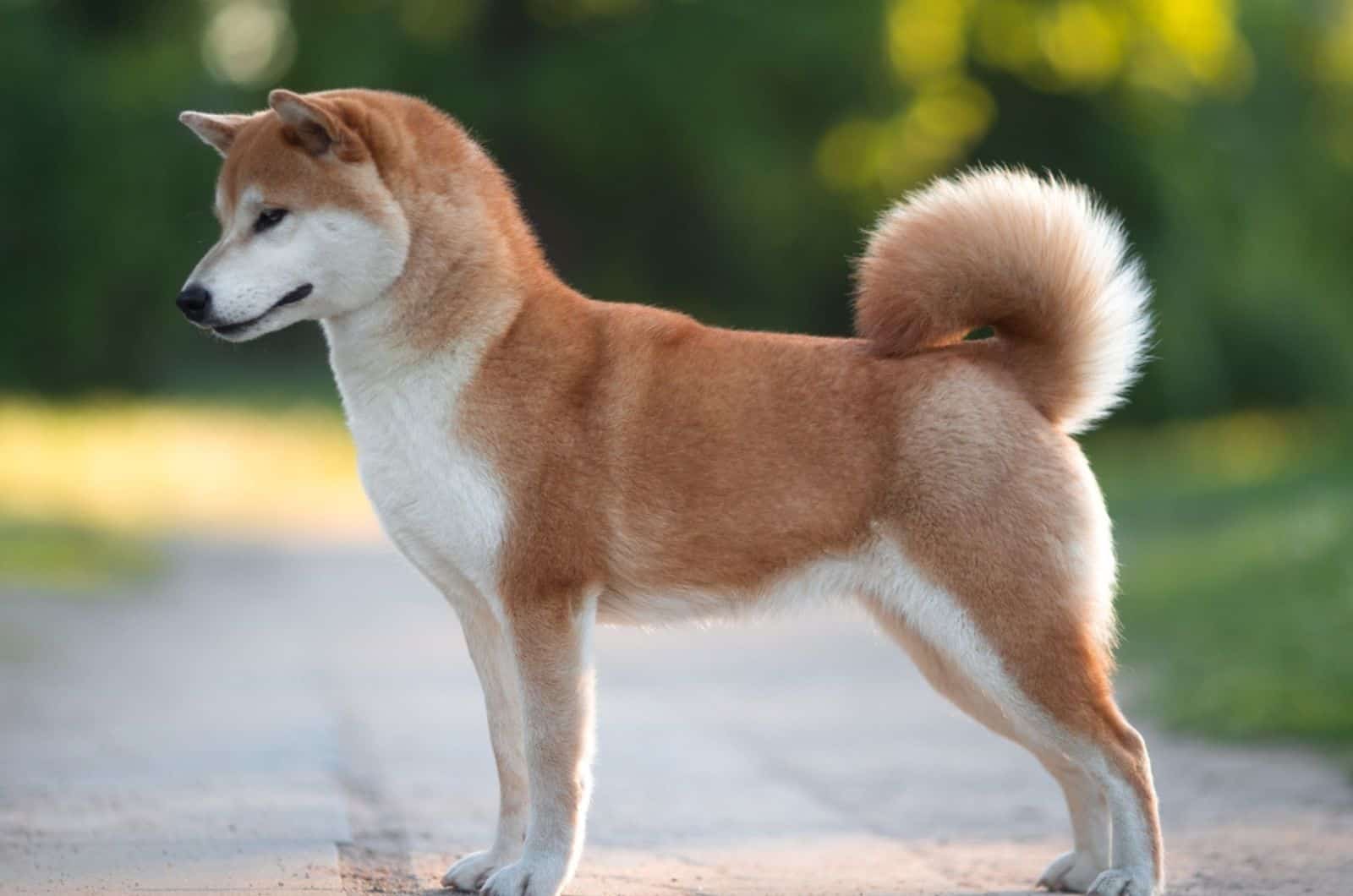
Akita Inu
These pooches generally have a medium-long, double coat. However, due to their genetics, some Akitas may have a long coat, too.
They are low to moderate shedders, even though their puppies shed excessively during the shedding season. They require weekly brushing at least once or twice per week. On the other hand, they don’t need a bath more than every two or three months.
There are several Akita coat colors recognized by the AKC: black, brown and brindle, white, fawn, brown with black overlay, red with black overlay, and silver and fawn with black overlay.
Unlike Japanese Akitas that come only in brindle, black, and red coloration, the American ones have a broader spectrum of colors in their coat.
Their thick, double coat helps them maintain their body temperature during cold weather, which is why Akitas are favorable in cold areas as well as in warmer areas.
Shiba Inu
Unlike their Akita counterparts, these pooches have a short, double coat, with a softer undercoat. They generally shed moderately in between seasons, which is why weekly brushing is ideal to keep these puppies sharp looking.
Despite having a short coat, their stiff outer coat preserves them from severe coldness, which is why these dogs are also perfectly capable of living in cold areas.
When it comes to their coloration, Shiba puppies, according to the American Kennel Club, come in four different color patterns: black and tan, cream, red, and red sesame. Still, you can find this pooch in other color patterns such as silver, black, brindle, and sable.
Shiba Inu colors are one of the few reasons why these puppies are so favorable in households as they look fashionable and neat.
These dogs don’t require bathing unless it is necessary. They are naturally extremely clean dogs that know how to take care of their coat. Still, if you take your puppy out on a regular basis, an occasional bath may be needed.
Akita Inu Vs Shiba Inu: Temperament
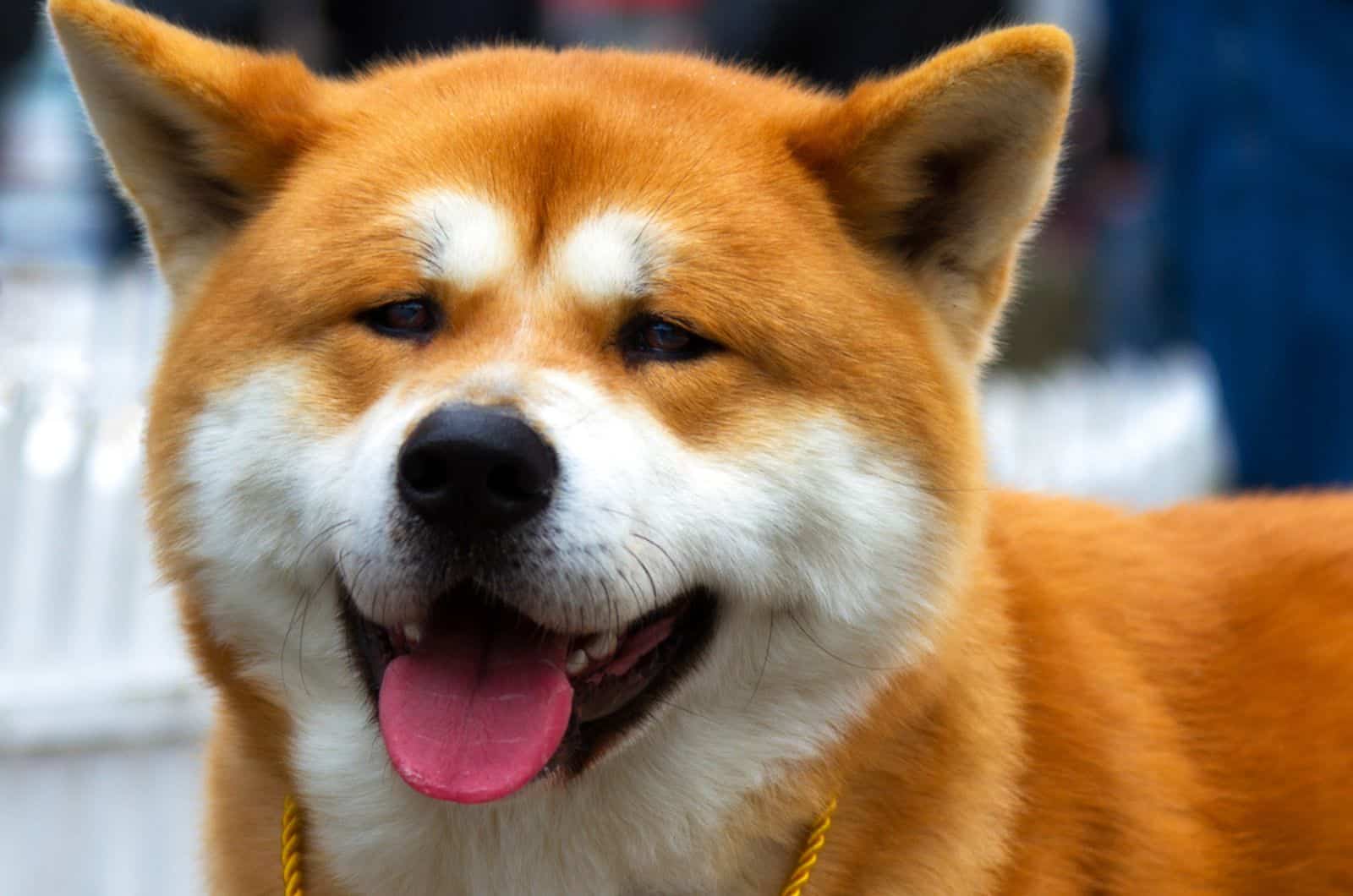
The “Akita Inu vs Shiba Inu” battle in terms of their temperaments is never-ending. Both of these dogs make excellent pets once they are properly socialized. Still, neither of them is naturally the best dog for a family as they are quite reserved and independent.
Furthermore, they are not easy to potty train nor to obedience train. These pooches require experienced and devoted owners who know how to stand the ground of a pack leader. Otherwise, your dog will be training you, which is pretty overwhelming.
However, their occasional stubbornness and mischievous behavior doesn’t mean that these are not loyal dogs. On the contrary, both Akitas and Shiba puppies will do anything to protect their loved ones.
In order to determine which breed is more suitable for your lifestyle, you need to take into consideration several factors: your experience as a dog owner, the living environment, having other pets in the house, and your overall lifestyle.
Akita Inu
Both male and female Akitas are extremely intelligent dogs. That said, these puppies excel at all tasks easily, but the problem is that they don’t always want to. Akitas have a natural level of stubbornness on display, which makes their overall temperament hard for novice owners.
That’s why the breed is recommended for experienced owners who know how to stand their ground as the pack leader. Furthermore, these pooches won’t be happy in a small apartment or in a fenced yard.
They need a good amount of exercise during the day, which also helps them bond with their owners properly.
You can use daily walks to train them in socialization and obedience by using positive reinforcement techniques. The use of healthy snacks, praise, and petting is a good place to start.
These pooches are not ideal for having next to other pets. They are very territorial, which means that they will display aggressive behavior towards other dogs or pets. That said, Akitas are not recommended for families with small children either.
If, by chance, you happen to have kids in your house, supervision is highly recommended.
Shiba Inu
If you’re wondering whether Shiba dogs are aggressive, the answer is – at times, yes! These small to medium-sized puppies may get along better with children or other pets, but that doesn’t necessarily mean that they are naturally social dogs.
On the contrary, this breed requires early socialization and (favorably) obedience training to adapt to a big family.
The best way to start their socialization is as soon as the puppy enters your home. Bringing friends over during your Shiba’s early puppyhood stage may help your pet distinguish enemies from friends.
However, these are extremely loyal and playful dogs that enjoy spending time with their family. That said, Shiba puppies are exclusively house dogs as they don’t do well outdoors.
Getting a Shiba Inu means adapting your daily schedule to your puppy’s needs. Shibas can be extremely sensitive, especially when left alone. Separation anxiety is not that uncommon in these Japanese beauties, which is why you shouldn’t get this puppy unless you have a flexible business schedule.
Anxiety can trigger self-destructive behavior in Shibas, which has severe repercussions in the long run.
Still, with proper socialization and parenting, these alert puppies can be amazing companions. Although they are small in their appearance, these pooches are excellent watchdogs as they are always on alert and ready to protect their family.
Akita Inu Vs Shiba Inu: Socialization
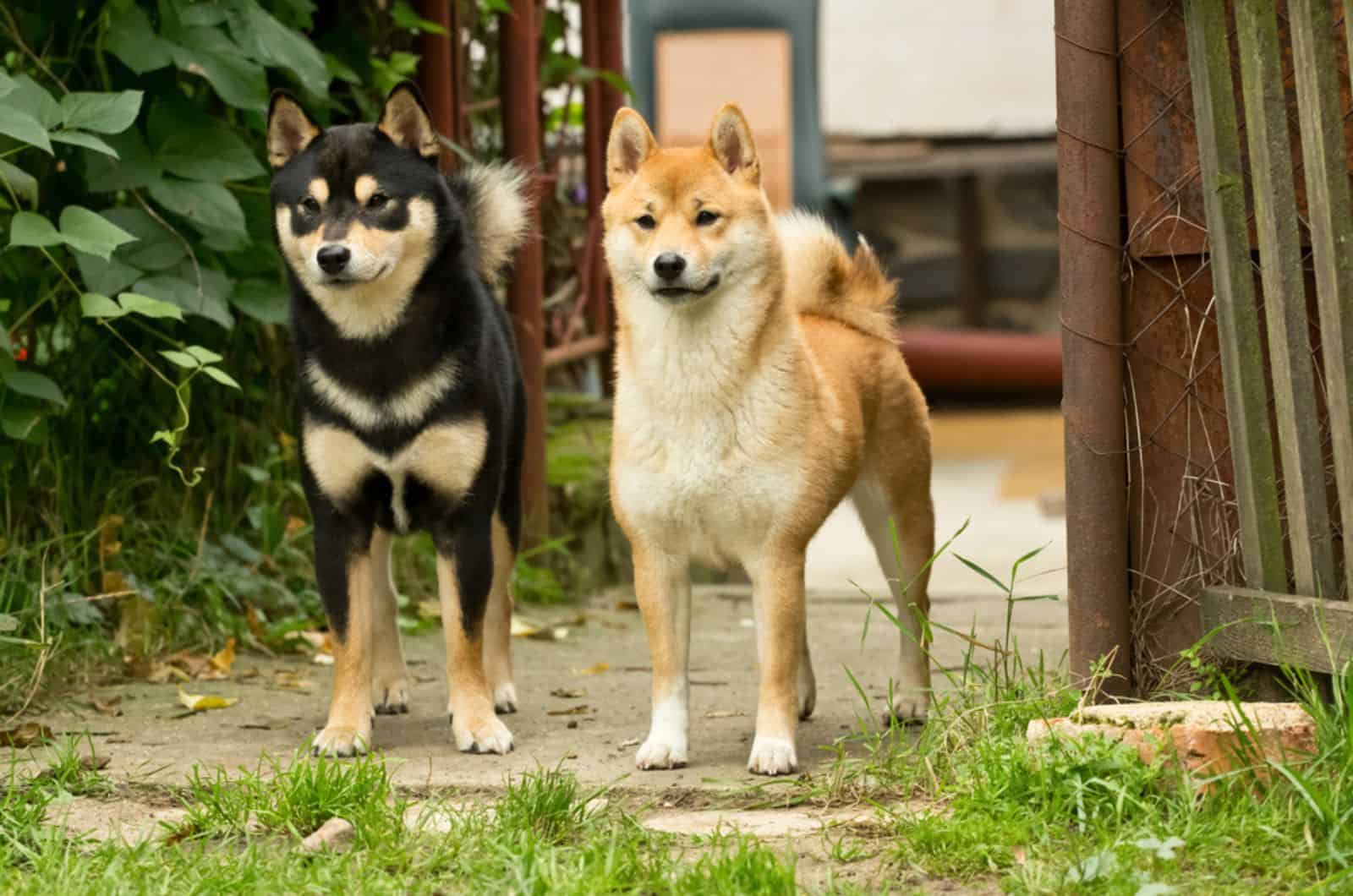
Akita Inu
Naturally, Akita pooches belong to the club of aggressive dog breeds. These canines are independent, aloof with strangers, and are watchdogs by default, which makes the socialization process an unavoidable part of their upbringing.
Despite the fact that they need firm leadership, most Akita puppies respond well to positive reinforcement. That said, you can consider purchasing interactive dog toys for your puppy as well as giving an occasional healthy snack during training.
They need time to adapt to owners and other family members, but these pooches eventually become great companions. Still, early socialization is highly preferred when getting an Akita puppy from a breeder.
That way, you will avoid unpleasant outbursts and potential aggression towards newcomers.
However, if you’re not an experienced dog owner, the advice is to start with a lower-maintenance dog breed, such as a Lab Retriever or a Poodle. These pooches need confident owners who know exactly how to stand their ground as a pack leader.
Shiba Inu
These pooches are generally friendlier towards newcomers, children, and other pets than their Akita counterparts. Shibas are not as territorial as Akita Inus, which makes the whole adaptation process a lot easier.
Still, the puppy requires early socialization in order to perfect its puppy manners as some Shiba dogs have unpleasant outbursts around unknown people.
Socialization helps them get along with family members easier, but it also helps them to learn all the dos and don’ts in the house.
Well-socialized Shiba puppies are great with children and other dogs. However, the recommendation is to always supervise their playtime with kids as these pooches have a naturally high prey-drive.
Try implementing positive reinforcement techniques as these pooches respond excellently to toys made for the Shiba breed, as well as giving snacks as one of the most powerful positive reinforcement tools.
If you’re a hopeless Shiba enthusiast, and you’re inclined to buy one of these puppies, the advice is to buy one from a reputable breeder.
Purchasing a puppy from high-quality breeders positively correlates with the puppy’s solid manners as those breeders subject their newborns to a puppy culture program.
Additionally, you will get a healthy, examined dog with all documentation needed.
Trainability

Akita Inu
Despite the fact that these pooches are highly intelligent and intuitive, the training process in Akita puppies is not as easy as you might think it would be.
Their stubbornness and, at times, mischievous behavior is the reason why these puppies are not put on the list of the smartest dog breeds in the world. They simply enjoy being independent and having their own way.
That said, the breed requires firm leadership and an experienced owner. If you don’t know how to stand your ground as the leader, or you are just not experienced enough for such a high-maintenance breed – the advice is to look for a less demanding dog.
Aside from implementing positive reinforcement techniques, you may want to give your Akita dog a purpose. The breed loves being mentally challenged, which is why you need to stimulate them on a daily basis.
Shiba Inu
The training process for Shiba puppies should go easy and slow. These canines are not willing to do anything that makes them uncomfortable, which is why they may display aggression as a sign of protest.
Still, these pooches are highly intelligent and food-motivated. Motivating them with healthy snacks during training is highly encouraged, as well as using other positive reinforcement methods.
Socializing Shiba puppies is required during their puppyhood stage as socializing an aggressive dog in its adulthood is a much more complicated process.
The breed also requires firm leadership, but at the same time, they don’t respond well to yelling, screaming, or punching. On the contrary, you can only create a negative effect and make your Shiba dog even more unfriendly.
The dog is recommended for experienced owners as the breed may be too much for novice owners.
Still, if you start with their socialization and obedience training at an early stage, you can expect to have a nice, decent companion that knows how to use a potty and how to behave around other family members. In the end, it’s all really on you.
Akita Inu Vs Shiba Inu: Which One Is Better With Children
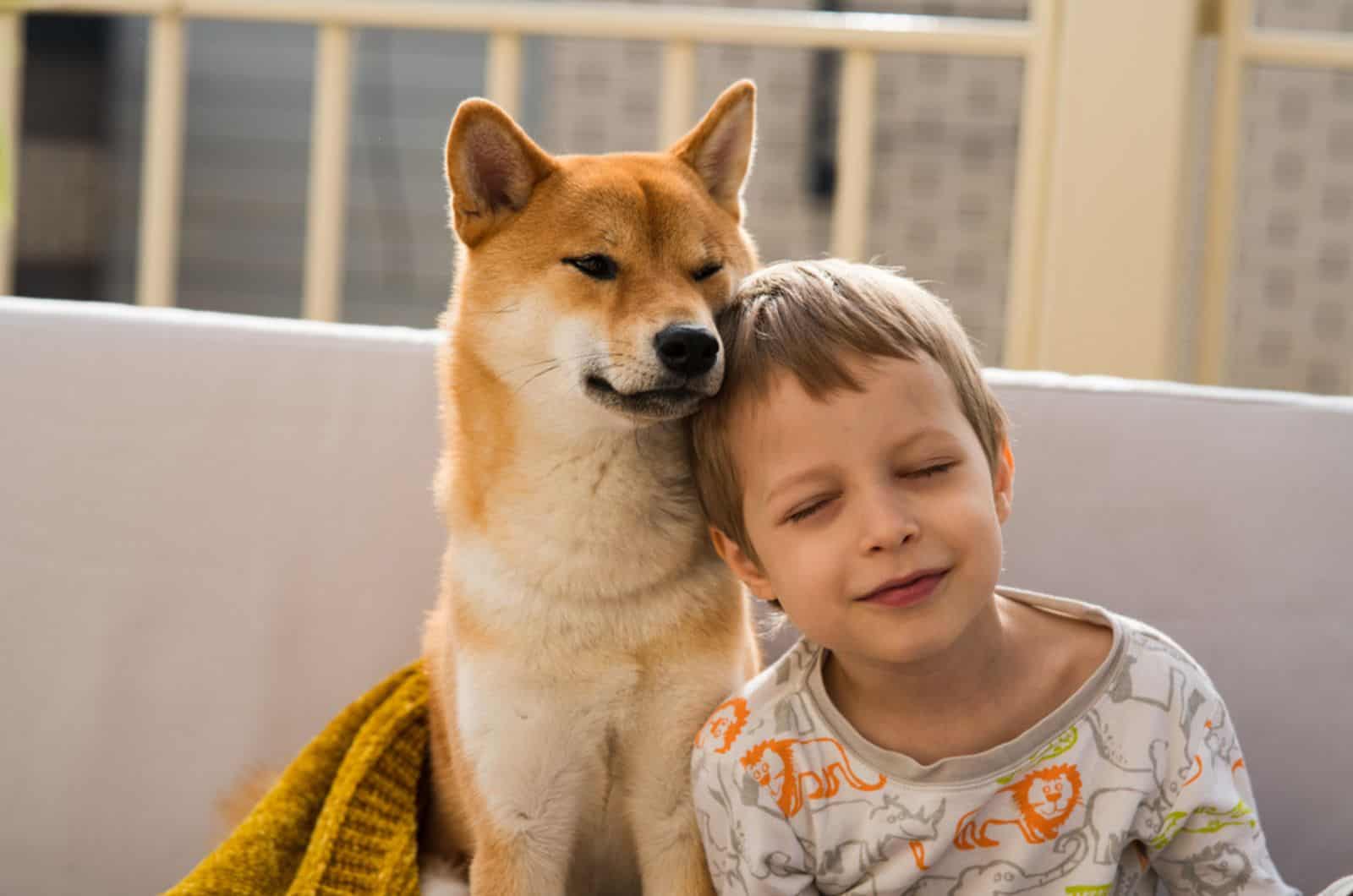
Generally, Shiba puppies have a better way with small children, but they need to undergo the process of socialization, too.
Both male and female Shiba puppies are independent and slightly reserved in the beginning, which can cause unpleasant outbursts if you force them to do something they don’t want to.
On the other hand, Akita puppies are not recommended to families with small children as these canines are extremely territorial and possessive.
This is a large breed that uses all its power to protect itself. They may feel endangered by children or other pets, especially if not approached carefully.
Still, properly-socialized Akita puppies may get along with all family members just fine, but they need a certain amount of time to adapt.
On the contrary, early-socialized Shiba puppies won’t mind sharing their space with children or even with other pets.
Akita Inu Vs Shiba Inu: Price

The average price for Akitas revolves between $700 and $2000. On the other hand, their counterparts, Shibas, may be slightly more expensive as their average price revolves between $1500 and $2500.
Shiba puppies are way more popular in households than Akitas, which adds to their overall price. Still, some puppies can be purchased for less than $1000, mostly from back yard breeders or in unreliable puppy mills.
However, the recommendation is to always do a little research prior to purchasing as getting both of these dogs from reputable breeders will pay off in the future.
Puppies that you buy from reliable kennels will be health and bloodline tested, vaccinated, dewormed and the breeder will provide you with complete AKC documentation.
Additionally, their price includes a leash (sometimes even a dog training collar), a microchip, dog toys, a blanket, and their first pack of food.
Spending more in the initial stage generally means spending less in the future. Health-examined and bloodline-tested dogs are more likely to have less health problems in the future.
Akita Inu Vs Shiba Inu: Health Issues
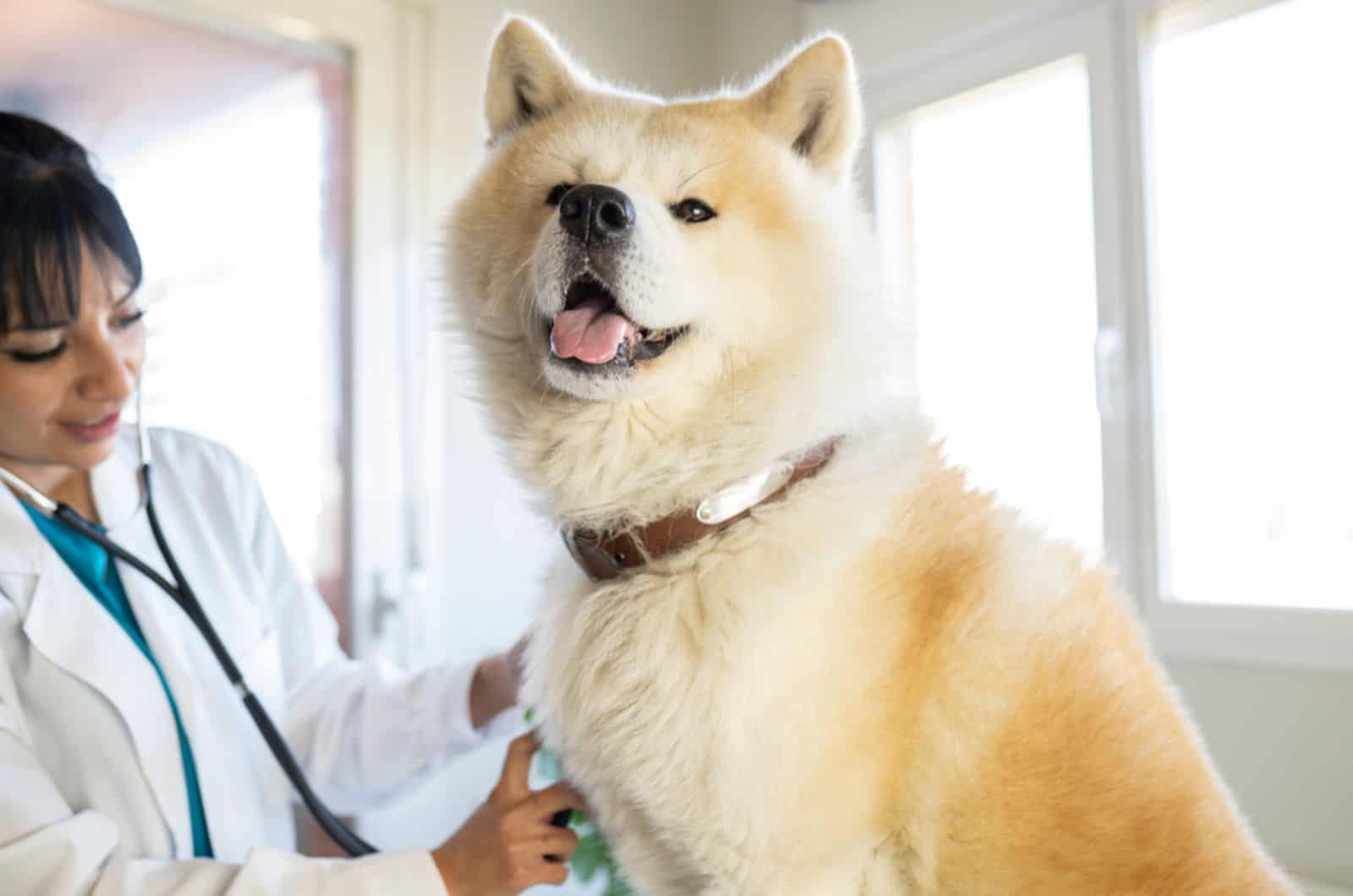
Both of these dogs are extremely healthy, and the Shiba puppy happens to be among the top 20 healthiest dog breeds in the world. The average lifespan of these small to medium-sized pooches revolves between 13 and 16 years.
On the other hand, the average life expectancy of Akita pooches is 12 to 14 years. If we compare these two breeds with other dogs from their family, we will see that their lifespan is significantly higher.
Still, both of these breeds may face several health problems such as hip dysplasia, patellar luxation, hypothyroidism, and bloat (although bloat is generally more related to Akitas than to Shibas).
Hip Dysplasia
Hip dysplasia in dogs is relatively common for both of these breeds. The condition represents the malfunction of a hip joint, which causes a ‘‘bunny walk’’ in dogs.
Other symptoms related to hip dysplasia are reluctance to climb stairs, inability to run or jump properly, lack of interest in regular dog activities, and pain in the groin.
Generally, dogs purchased from reliable breeders are less likely to come with hip dysplasia as quality breeders subject their newborn puppies to early hip and elbow evaluation.
Still, if you have a puppy with this condition, the advice is to seek veterinary help as soon as you notice the first symptoms. Untreated dysplasia can cause further injuries.
This condition is treated mostly by surgery, although weight reduction is highly recommended for puppies with hip dysplasia. The average cost of surgery revolves between $1500 and $3000, which is one more reason to consider getting a puppy from a reliable breeder.
Bloat
Bloat generally occurs in puppies with a wider chest, which is why this condition is highly unlikely to happen in Shibas.
On the other hand, Akita pooches are prone to bloat. That said, if you’re a proud Akita owner, you should take into consideration your puppy’s dietary needs and design a proper feeding chart.
Junk food, voracious eating, and poorly-timed meals can be a trigger for bloat. Furthermore, giving a puppy food right before bedtime can be as dangerous as junk food itself. Unprocessed food can be the reason for bloat in dogs, too.
The most common symptoms of this condition are a swollen stomach, panting, restlessness, lethargy, stomach ache, and lack of appetite. It is hard to tell whether a dog with bloat will drink water as this matter is relative.
Treating bloat in dogs timely is of crucial importance as the condition can have deadly repercussions.
Hypothyroidism, Patellar Luxation, And PRA
Hypothyroidism is a common issue for both of these breeds. The condition is generally caused by idiopathic thyroid gland atrophy. Unfortunately, this issue is not curable, but it is treatable with oral medications.
Some of the symptoms related to hypothyroidism are lethargy, lack of activity, loss of appetite, dry hair, excessive shedding, intolerance to cold, inability to regrow their hair, and high cholesterol.
On the other hand, luxating patella and PRA (progressive retinal atrophy) is less likely to happen, but it may affect some Shiba and Akita puppies. Luxating patella is a kneecap misalignment, which causes skipping or hopping.
PRA is a progressive disease that happens gradually. This is a hereditary issue that causes partial or total blindness in dogs. If you have a dog with PRA, make sure you create a safe, nurturing environment. Keep your pooch away from sharp edges, and always approach it slowly.
PRA can make a dog lose a good part of its coordination.
Akita Inu Vs Shiba Inu: Which One To Choose
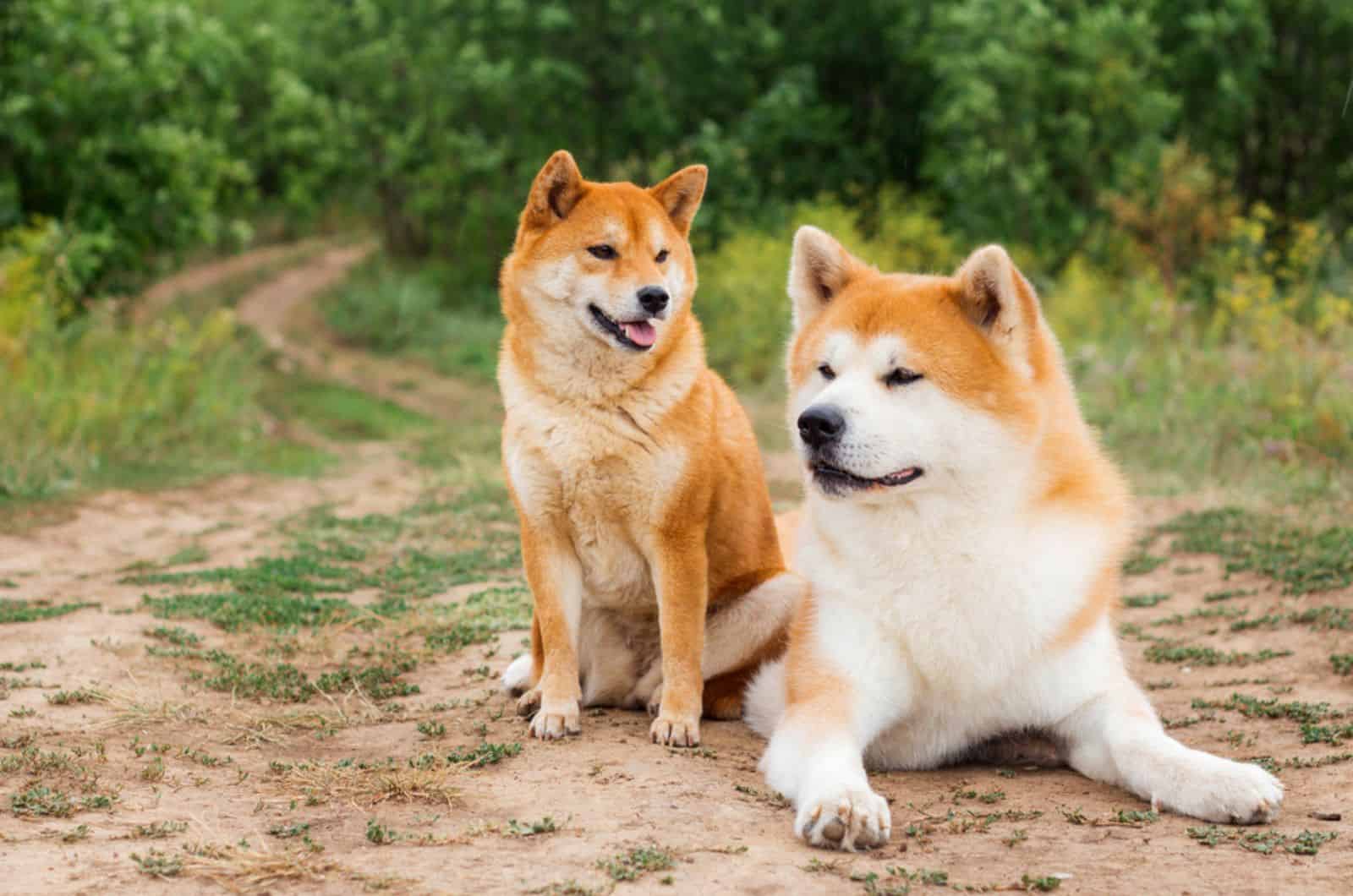
The ‘‘Akita Inu vs Shiba Inu’’ battle is never-ending. It is almost impossible to determine which one of these dogs is better for you as they have two completely different personalities.
If you are an active person who lives in a spacious house, but at the same time, you don’t have any other pets – then go for an Akita puppy! Even though these dogs are not exactly the best family dogs in the world, they can be amazing companions once they undergo the process of socialization.
On the other hand, if you want to have more than one pet in your house, or if you live with small children – then a Shiba puppy is the better choice for you. These pooches are more adaptable, and they have a higher tolerance threshold.
Final Thoughts
The ‘‘Akita Inu vs Shiba Inu’’ dilemma is not that uncommon among Spitz lovers. Both of these dogs represent loyal, affectionate, and good companions once socialized and obedience trained.
In order to make a choice, you should research both of these dog breeds in detail and see which of them suits you more. Despite the fact that they may appear similar in some segments, the truth is these are completely different breeds, both behaviorally and physically.
On the other hand, if you already have one of these pooches in your house, I hope this article has justified its purpose!
Read more: Shiba Inu German Shepherd Mix: Everything You Need To Know

